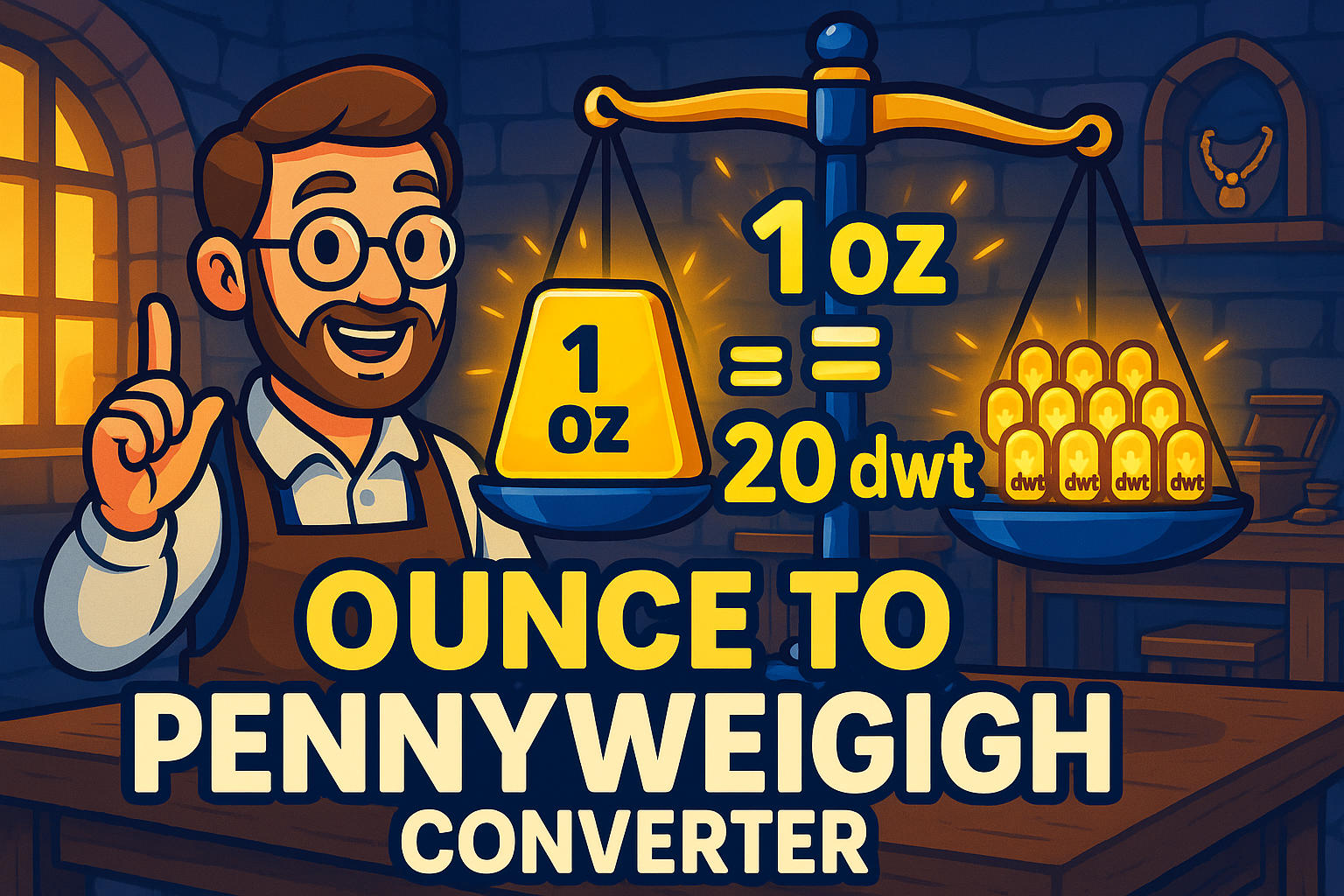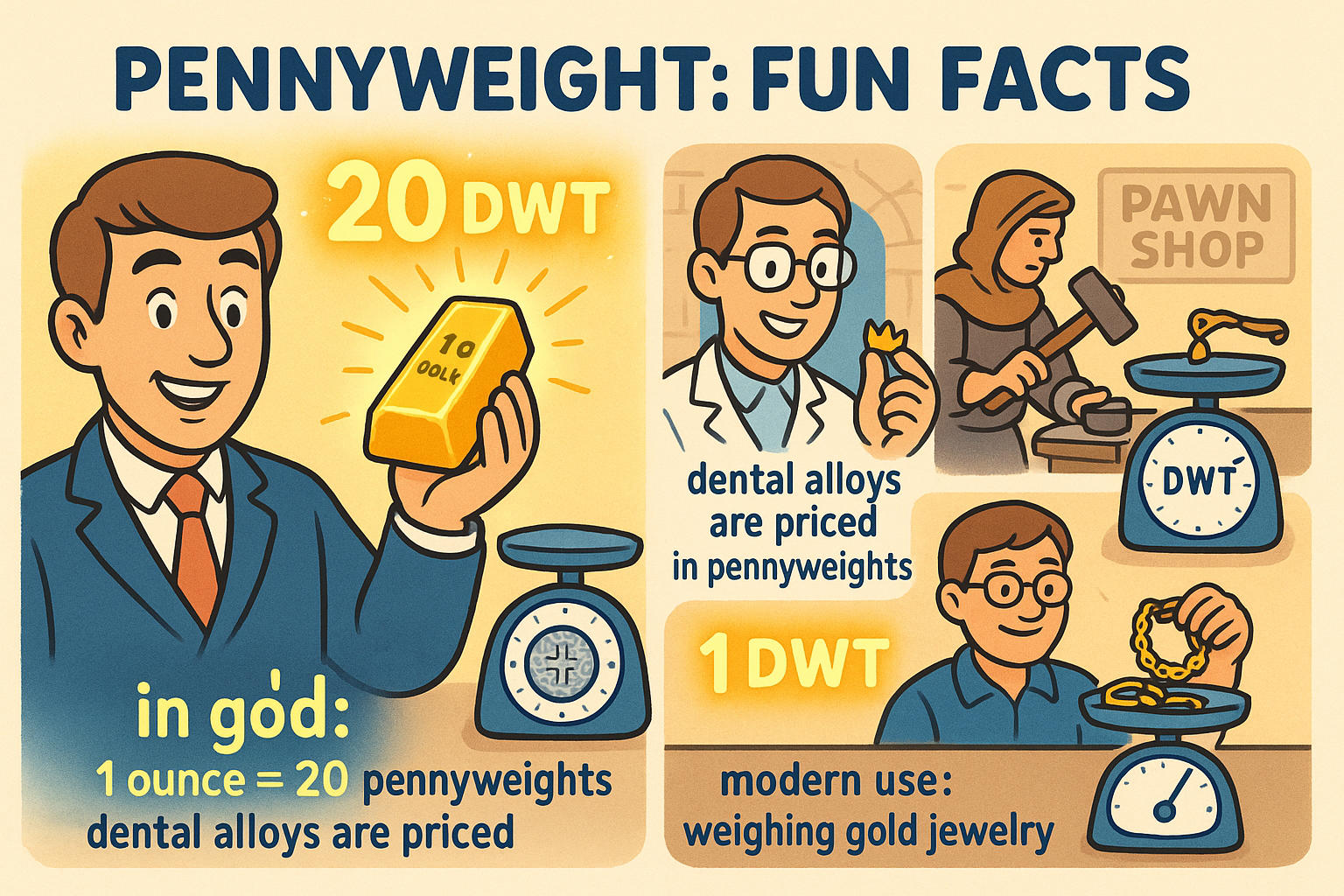ounce to pennyweight - How to convert oz to dwt
Need to convert ounces to pennyweights in a flash? Whether you're working with precious metals or historical documents, this guide explains how to convert ounces to pennyweights (oz to dwt) accurately, with real examples and stories.
Ounces and Pennyweights - What do you need?
The ounce (oz) is a unit of weight widely used in the imperial and U.S. customary systems. It has two common variations:
-
Avoirdupois ounce – used for everyday items like food and mail (1 oz = 28.3495 g)
-
Troy ounce – used for precious metals (1 troy oz = 31.1035 g)
If you're working in multiple systems, use our comprehensive unit converter tool to avoid confusion.
A pennyweight (dwt) is a unit of mass from the troy weight system, traditionally used for measuring precious metals like gold, silver, and platinum. The word “pennyweight” comes from the weight of an old English penny in the Middle Ages.
Pennyweights are still used in:
-
Jewelry manufacturing and sales
-
Precious metal refining
-
Pawn and appraisal industries
If you're unsure how dwt compares with grams or grains, try our weight converter for quick and clear results.

How to Convert Ounce to Pennyweight?
This one’s simple — if you’re using troy ounces:
pennyweight = ounces × 20
Example:
2 troy ounces = 2 × 20 = 40 dwt
For instant results and automatic rounding, use JetCalculator’s conversion tool.
Did You Know?
-
In gold trading, both ounces and pennyweights are troy units. A 1-ounce gold bar contains 20 dwt of pure gold — this measurement standard helps unify global trading practices.
-
Dental labs often buy precious alloys like gold or palladium by the pennyweight. Even today, crowns and bridges may be priced per dwt for accounting purposes.
-
Coinage in medieval England was calculated in pennyweights. A silver penny was expected to weigh exactly 1 dwt, which helped standardize economic exchanges before decimal systems existed.
-
Pawn shops use dwt scales to assess the value of gold jewelry. It’s more precise and industry-standard than using grams or ounces.
The Story of the Pennyweight
Back in the Anglo-Saxon period, currency was minted with strict rules. The English silver penny, first standardized under King Offa in the 8th century, was required to weigh exactly one pennyweight. This ensured fairness in trade and trust in coinage.
Over time, as currencies became symbolic rather than based on weight, the pennyweight faded from everyday transactions. But it lived on in trades where weight equals value — like jewelry and precious metal dealing. The unit now thrives in modern refineries and appraisal shops, where even the smallest deviation in weight can mean a difference of hundreds of dollars.
From medieval mints to digital tools like Jetcalculator, the pennyweight continues to hold its own in today’s economy.

Conclusion
The conversion between ounce to pennyweight (oz to dwt) is essential in fields like jewelry, trading, and metalwork. Since 1 oz equals 20 dwt, it’s easy to calculate — but even easier when you use our smart conversion tool.

